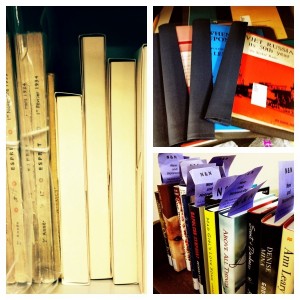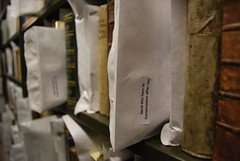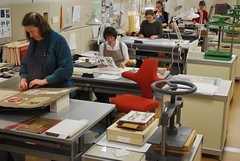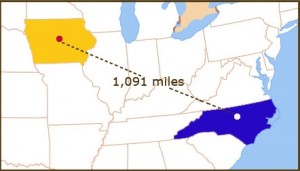 This month on the 1091 Project we hear from our student assistant, KellyNoel Waldorf, who started in Conservation as part of the enabling project. We were lucky enough to get her to stay on and continue working after that project was finished. She has been a great addition to our team and we love having her in the lab.
This month on the 1091 Project we hear from our student assistant, KellyNoel Waldorf, who started in Conservation as part of the enabling project. We were lucky enough to get her to stay on and continue working after that project was finished. She has been a great addition to our team and we love having her in the lab.
Written by KellyNoel Waldorf, Conservation Student Assistant
I dig my headphones from the recesses of my backpack, drop my bag into a locker, and press play on the new Mumford album. I let the music fill up my mind and my hands glide over the familiar tasks of collecting tools, snapping in a fresh scalpel blade, shaping boards and paper into folders, envelopes, binders, and boxes. For the next two hours I can relax.
As a senior at Duke University, a Linguistics and International Studies double major studying Spanish and German and working on a creative writing thesis, it seems that every minute of my day is scheduled. At work I don’t have to think about homework or job searches, meetings or finances. I get to work with my hands and listen to music, audio books, or TV re-runs. By the end of two hours I’ve picked out my favorite songs from the album and I’ve got a nice stack of old books freshly housed in tuxedo boxes. It’s gratifying. Holding the tangible evidence of a finished job gives me a weird sense of accomplishment.
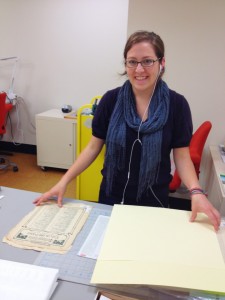
Three years ago I was looking through library positions and stumbled across the conservation posting. At first, I was hired to work on the Enabling Project (moving the Rubenstein Rare Books collection before impending renovations). I spent hours in the stacks sorting through books and discovering some of the hidden gems of the extensive collection. As the geek that I am, I felt cool about being one of the last people to ever work in the rare books rooms or to ride the creepy old elevator hidden among the Rubenstein stacks.
Eventually I moved down to the lab and started working on more hands-on projects. One of my favorites was a binder project housing old newspapers. When I started it was slow and I could only make a couple of binders in my shift. After about 200 hundred of them I was making stacks at a time. I would continue working with newspapers in a boxing project. For months there were endless carts of newspapers, I thought we would never see the end of them. Finally we boxed our last paper and I internally rejoiced. I had gone through several seasons of Buffy on that single project.
As a lover of languages, writing, poetry, and books, I am delighted by some of the pieces that my co-workers show me in the lab. My favorite discovery is Duke’s extensive Walt Whitman collection. My mild obsession with transcendentalist literature was intensified when I got to look at notes that were hand written by Whitman himself.
Let’s head over to Parks Library Preservation to hear from one of their student assistants


